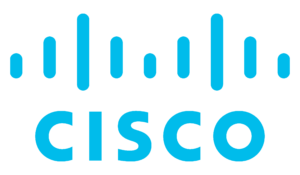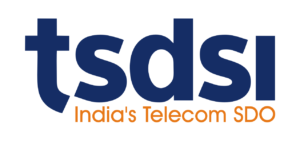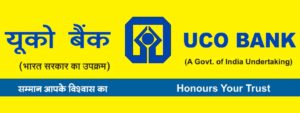Description
The field of connected vehicles stands at the confluence of three evolving disciplines – the Internet of Things (IoT), emerging standards for connectivity of vehicles, and AI/machine learning. The number of connected IoT devices is expected to grow from 9.5 billion devices in 2019 to 22.5 billion devices in 2025 [1]. More optimistic estimates project the number of IoT devices in 2025 to be 55 billion connected devices [2]. Consequently, applications of IoT devices have rapidly expanded to integrate intelligent sensing and processing along with smart applications of the technology into various fields such as smart homes, smart appliances, enterprises, smart transportation including connected vehicles, smart cities, agriculture, energy, security, healthcare, shopping, location-based services including tracking and other similar fields. The exponential growth of IoT is transforming the quality of living of human beings around the globe.
Fueling the growth in the evolution of vehicles towards total automation is the development of novel sensors, 3D cameras, lidars and radars and their ability to connect to the Internet, upload the data to a cloud. The sensors of an autonomous vehicle collect anywhere from 1.4 TB to 19 TB of data per hour. Whether or not the vehicles are autonomous, one of the key features of connected vehicles is that they are able to share data between themselves in real-time. For example, the scene of an accident or road work encountered by a vehicle can be immediately shared with vehicles it is connected to. Thus vehicles may learn about accidents or road work well in advance so as to enable them to make smart decisions and establish alternate routes to their destinations. The workshop will help in understanding the role of these sensors with use cases.
The vast amount of raw data collected must by mined for it to become useful in ensuring traffic safety by means such as intelligent rerouting of traffic or distribution of information on roadwork activities or accidents. Machine learning is a mechanism that has become extremely powerful in extracting meaningful data. A number machine learning algorithms exist and can be broadly classified under unsupervised, supervised, and reinforcement learning algorithms. A number of algorithms exist under each category. The workshop will address the impact of machine learning and their applications to connected vehicles with several use cases.
Scope
The workshop will address a number of technical issues involving the application of artificial intelligence/machine learning to connected vehicles. The areas in which machine learning can be effective include, but not limited to:
- Channel estimation, especially with high-mobility vehicles with rapidly changing environment and channel conditions; machine learning can adapt to the environmental dynamics and estimate and even predict the channel characteristics;
- Prediction of traffic flow by applying machine learning to the vast amount of past traffic flow information, history of accidents, congestion, roadworks, detours, and other traffic incidents possibly due to weather;
- Resource allocation in wireless networks of connected vehicles by exploiting machine learning, utilizing information gathered from the previously mentioned aspects of channel estimation and traffic flow prediction, to efficiently allocate the scarce radio and network resources to connected vehicles; and
- Predicting the driving behaviors of drivers, the physical and emotional status, alert the drivers of possible corrective actions to take to avoid accidents.
- Application of machine learning to determine and even predict security threats to connected vehicles and ensuring privacy and security.
- Machine learning to protect VRUs and enhance their safety.
The above are only a few of the example topics in which some or most of the following subtopics apply.
- 3D computer vision in connected vehicles
- Action and behavior recognition of drivers/vehicles in connected vehicles
- Adversarial learning, adversarial attack and defense methods in connected vehicles
- Biometrics, face, gesture, body pose of driver in connected vehicles
- Computational photography, image and video synthesis for connected vehicles
- Efficient training and inference methods for connected vehicles
- Explainable AI, fairness, accountability, privacy, transparency and ethics for connected vehicles
- Image retrieval in connected vehicles
- Low-level and physics-based vision analysis for connected vehicles
- Machine learning architectures and formulations for connected vehicles
- Motion and tracking in connected vehicles
- Neural generative models, auto encoders, GANs in connected vehicles
- Optimization and learning methods in connected vehicles
- Recognition (object detection, categorization) in connected vehicles
- Representation learning, deep learning in connected vehicles
- Scene analysis and understanding in connected vehicles
- Segmentation, grouping and shape in connected vehicles
- Transfer, low-shot, semi- and un- supervised learning in connected vehicles
- Video analysis and understanding in connected vehicles
- Vision + language, vision + other modalities in connected vehicles
- Visual reasoning and logical representation in connected vehicles
- General Machine Learning (active learning, clustering, online learning, ranking, reinforcement learning, semi-supervised learning, time series analysis, unsupervised learning, etc.) in connected vehicles
- Deep Learning (architectures, generative models, deep reinforcement learning, etc.) in connected vehicles
- Learning Theory (bandits, game theory, statistical learning theory, etc.) in connected vehicles
- Optimization (convex and non-convex optimization, matrix/tensor methods, sparsity, etc.) in connected vehicles
- Probabilistic Inference (Bayesian methods, graphical models, Monte Carlo methods, etc.) in connected vehicles
- Trustworthy Machine Learning (accountability, causality, fairness, privacy, robustness, etc.) in connected vehicles
Workshop Chairs
Dr. Seshadri Mohan
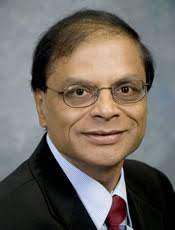
Dr. Seshadri Mohan is currently a professor in Systems Engineering Department at University of Arkansas at Little Rock, where, from August 2004 to June 2013, he served as the Chair of the Department of Systems Engineering. Prior to the current position he served as the Chief Technology Officer (CTO) and Acting CEO of IP SerVoniX, where he consulted for several telecommunication firms and venture firms, and served as the CTO of Telsima (formerly known as Kinera). Besides these positions, his industry experience spans a decade at New Jersey-based Telcordia (formerly Bellcore) and Bell Laboratories. Prior to joining Telcordia, he was an associate professor at Clarkson and Wayne State Universities. He has authored/coauthored over 150 publications in the form of books, patents, and papers in refereed journals and conference proceedings with citations to his publications in excess of 6400. He is a co-inventor of 15 inventions with US and international patents. He has co-authored the textbook Source and Channel Coding: An Algorithmic Approach. He has also served as a Guest Editor for several Special issues of IEEE Network, IEEE Communications Magazine, ACM MONET and Wireless Personal Communications. In April 2011, he was awarded the 2010 IEEE Region 5 Outstanding Engineering Educator Award. He received the best paper award for the paper “A Multi-Path Routing Scheme for GMPLS-Controlled WDM Networks,” presented at the 4th IEEE Advancecd Networks and Telecommunications Systems conference. He is a co-founder of the startup IntelliNexus, LLC. He holds a Ph.D. degree in electrical and computer engineering from McMaster University, Canada, the Master’s degree in electrical engineering from the Indian Institute of Technology, Kanpur, India, and the Bachelor’s degree in Electronics and Telecommunications from the University of Madras, India.
Dr. Sachin Sharma
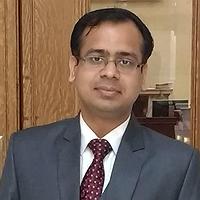
Dr. Sachin Sahrma is presently serving as the Associate Dean, International Affairs and Associate Professor, Department of Computer Science and Engineering at Graphic Era Deemed to be University, Dehradun, UK, India. He is also Co-founder and Chief Technology officer (CTO) of IntelliNexus LLC, Arkansas, USA. He also worked as a Senior Systems Engineer at Belkin International, Inc., Irvine, California, USA for two years. He received his Ph.D. degree in Engineering Science and Systems with specialization in Systems Engineering and the M.S. degree in Systems engineering from University of Arkansas (UA) at Little Rock, USA and the B.Tech. degree from SRM University, Chennai. During his B.Tech he participated in the student exchange program between UA Little Rock and SRM and spent two years at UA Little Rock. His research interests include wireless communication networks, IoT, Vehicular ad hoc networking and network security.
Dr. Klaus David

Dr. Klaus David (david@uni-kassel.de) is a full university professor and head of communication technology at Kassel University, Germany. His research interests include mobile networks, applications, and context awareness, and AI. He has 12 years of industrial experience in major companies like HP, Bell Northern Research, IMEC, T-Mobile (as Head of Group and UMTS project leader) and IHP (as Head of Department), with in total five years of international experience in the UK, Belgium, USA, and Japan. He has published over 200 scientific articles, including 3 books, and has registered over 10 patents. He is active in IEEE (Editor in Chief IEEE VT Magazine 2015 – 2018, BoG 2015 – 2017 IEEE VT), WWRF (Wireless World Research Forum) as publication manager and elected SB Member and he is involved in many conferences, such as IST Future Network & Mobile Summit 2012 Berlin as TPC chair or 2013, 14, 15,16 and 18 in IEEE PerCom as TPC member, or General Chair IEEE PerCom 2021. Also, he is a regular technology and strategy consultant to industry as well as co-founder of two start-up companies.
Agenda
Workshop Speakers
Vishnu Ram OV

Vishnu Ram OV has hands-on experience in the field of Telecom industry for more than two decades, developing and implementing standards, in the area of wireless communications and holds many international granted patents. He was nominated to Scientific Advisory Board Associate (SABA) member of Motorola Networks and the IET Future Tech Panel. From 2018, he has been working as an independent expert. He is the co-editor of ITU-T Focus Group specifications on Machine learning in 5G and ITU-T Focus Group in Autonomous Networks (FG AN). His current work items include coordinating standards initiatives, serving as liaison with other SDOs, industry bodies, open source and academia, mentoring student projects and coordinating the ITU “AI/ML in 5G“ Challenge across the globe. He has served as a guest editor of journals. He is a current vice chair of ITU-T Focus Group on Autonomous Networks. He has also coordinated the “Build-a-thon” coding challenge for ITU FG AN in which 12 teams acround the globe participated.
Guanghua Yang
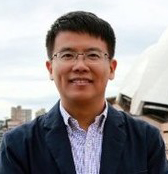
Guanghua Yang (Senior Member, IEEE) received the Ph.D. degree in electrical and electronic engineering from the University of Hong Kong, Hong Kong, in 2006.,From 2006 to 2013, he served as a Postdoctoral Fellow, a Research Associate, and a Project Manager with the University of Hong Kong. Since April 2017, he has been an Associate Professor and the Associate Dean with the Institute of Physical Internet, Jinan University, Guangdong, China. His research interests are in the general areas of communications and networking.
Marek Bachmann
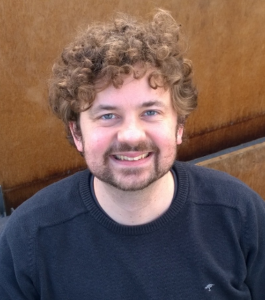
Marek Bachmann (born 1984 in Kassel, Germany) received the M.Sc. degree in computer science from University of Kassel, Germany in 2015. Since 2013, he works as a research assistant with the Chair for Communication Technology (ComTec) at the University of Kassel. For his Master Thesis, he focused on multimodal navigation systems with focus on machine learning methods for multimodal travel time prediction. Currently he is working in the domain of cooperative vulnerable road users (VRU) protection systems. His research focuses on methods for VRU behavior prediction using machine learning and context recognition. He carried out different research projects focusing on VRU safety systems with Continental AG and AUDI AG.
Teodor Ivanescu
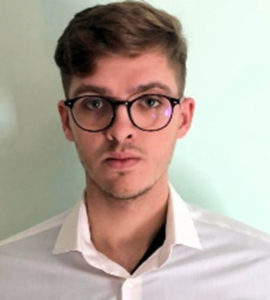
Teodor Ivanescu currently works at the Department of Electronics and Computer Science (ECS), University of Southampton. Teodor does research in Communication Engineering, Electrical Engineering and Electronic Engineering. Their most recent publication is ‘Hybrid beamforming design for dual-polarised millimetre wave MIMO systems’.




